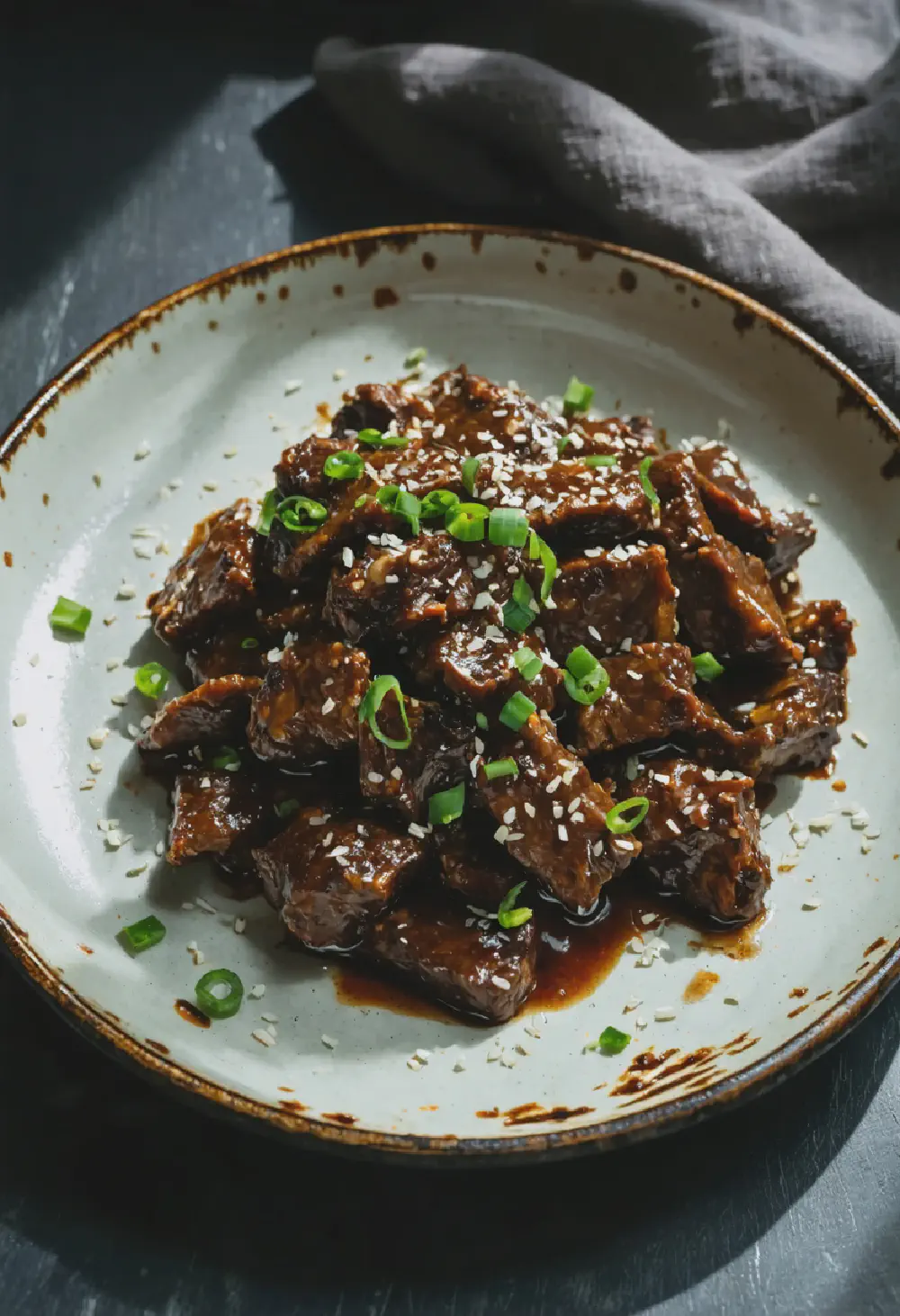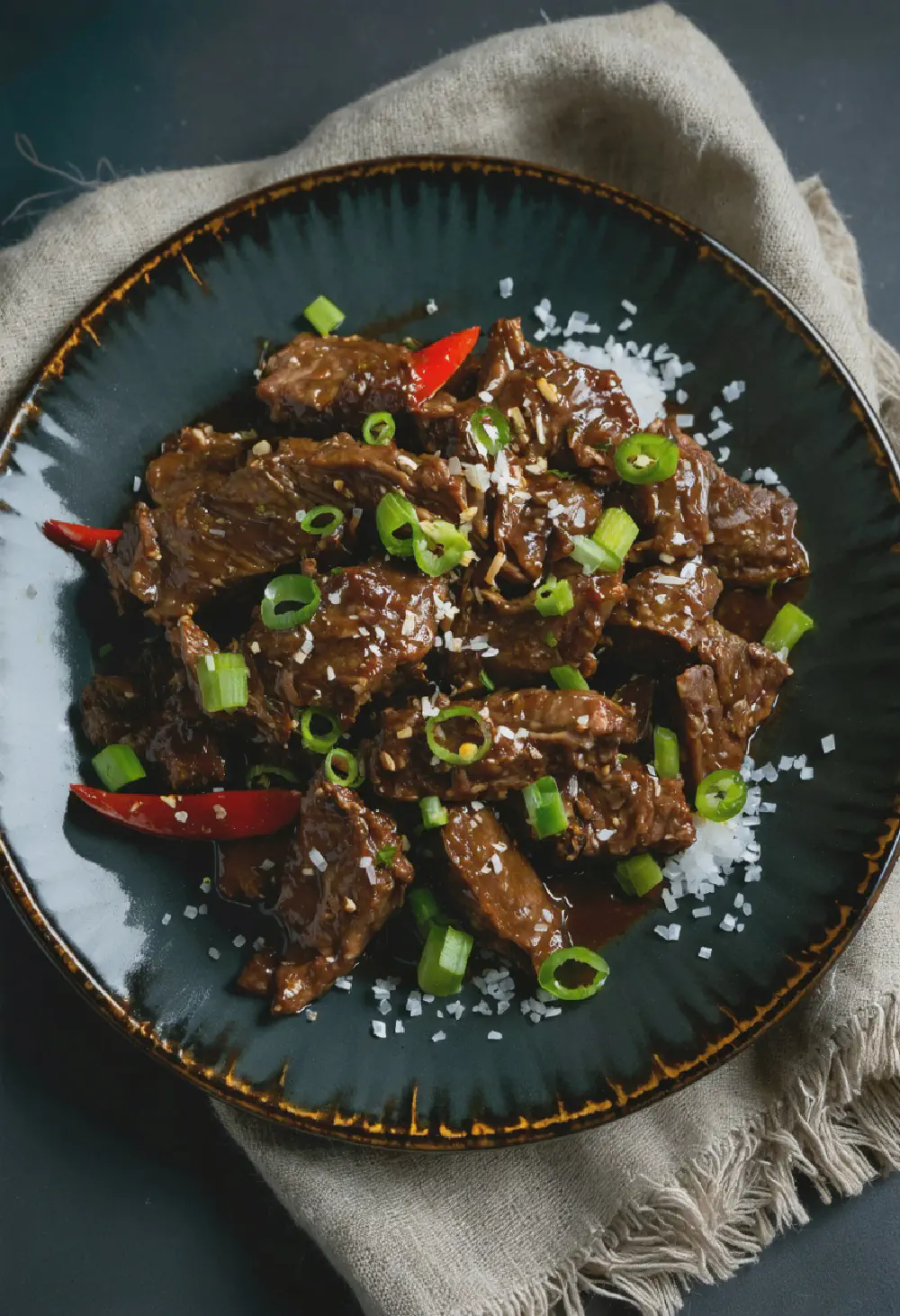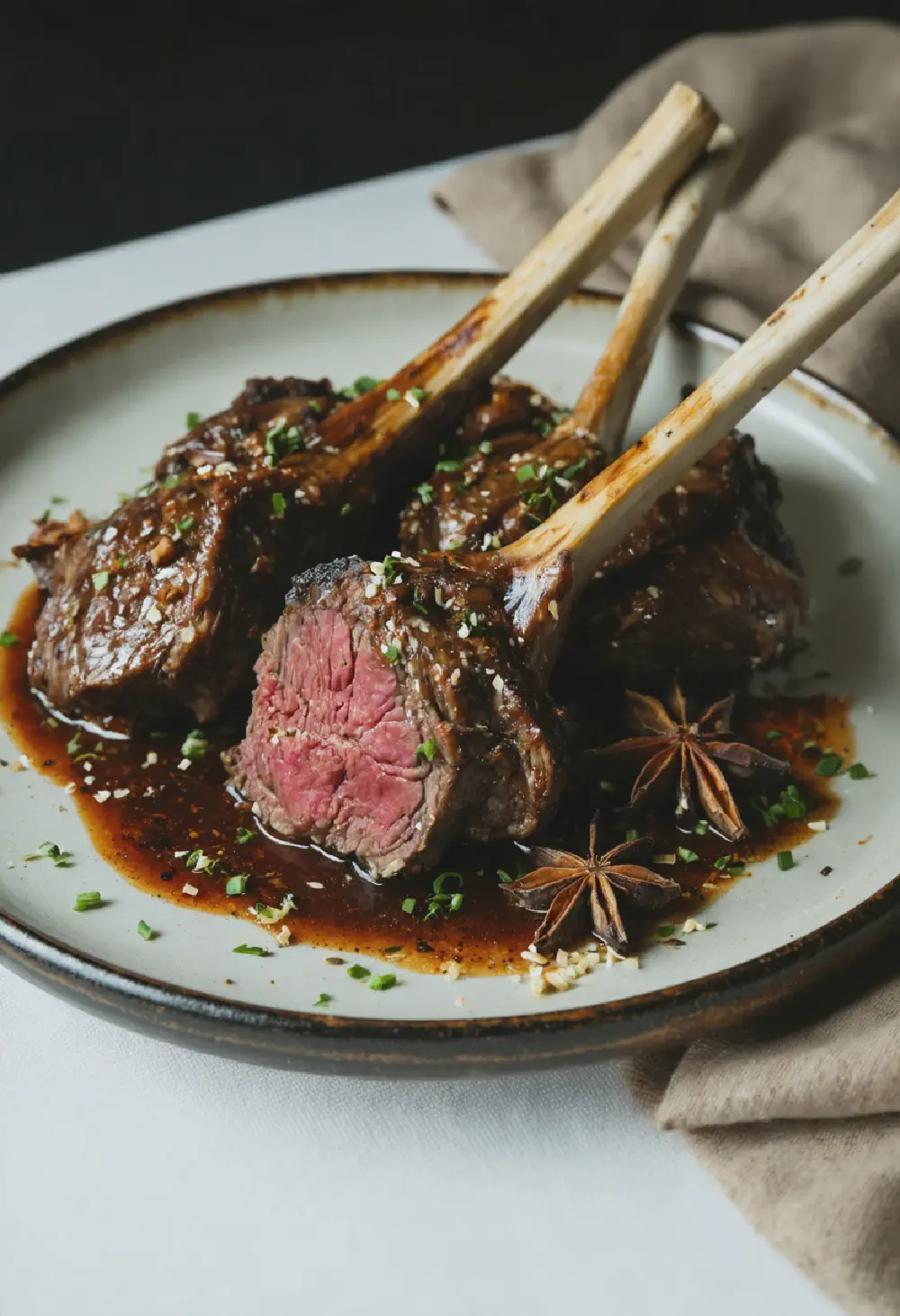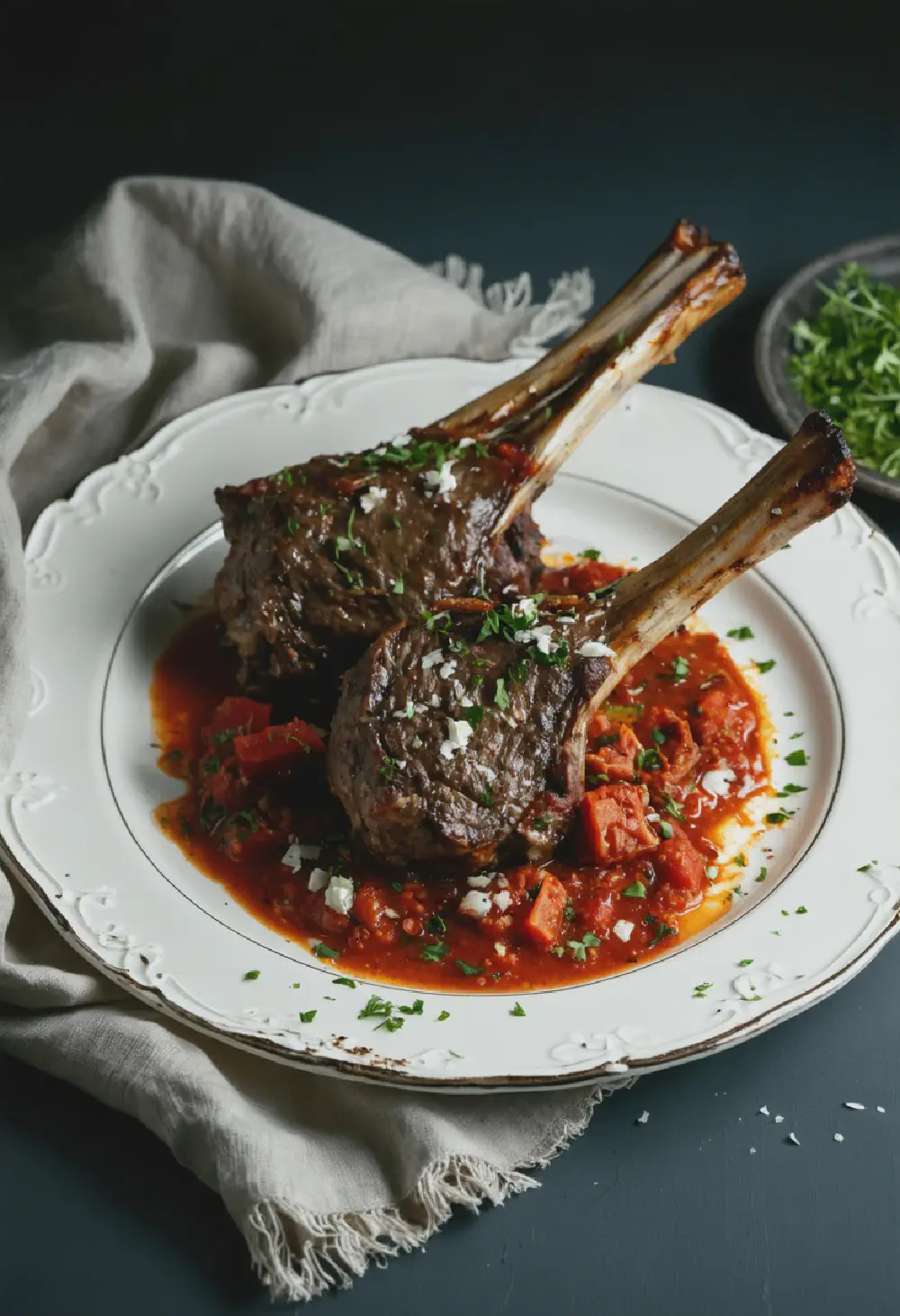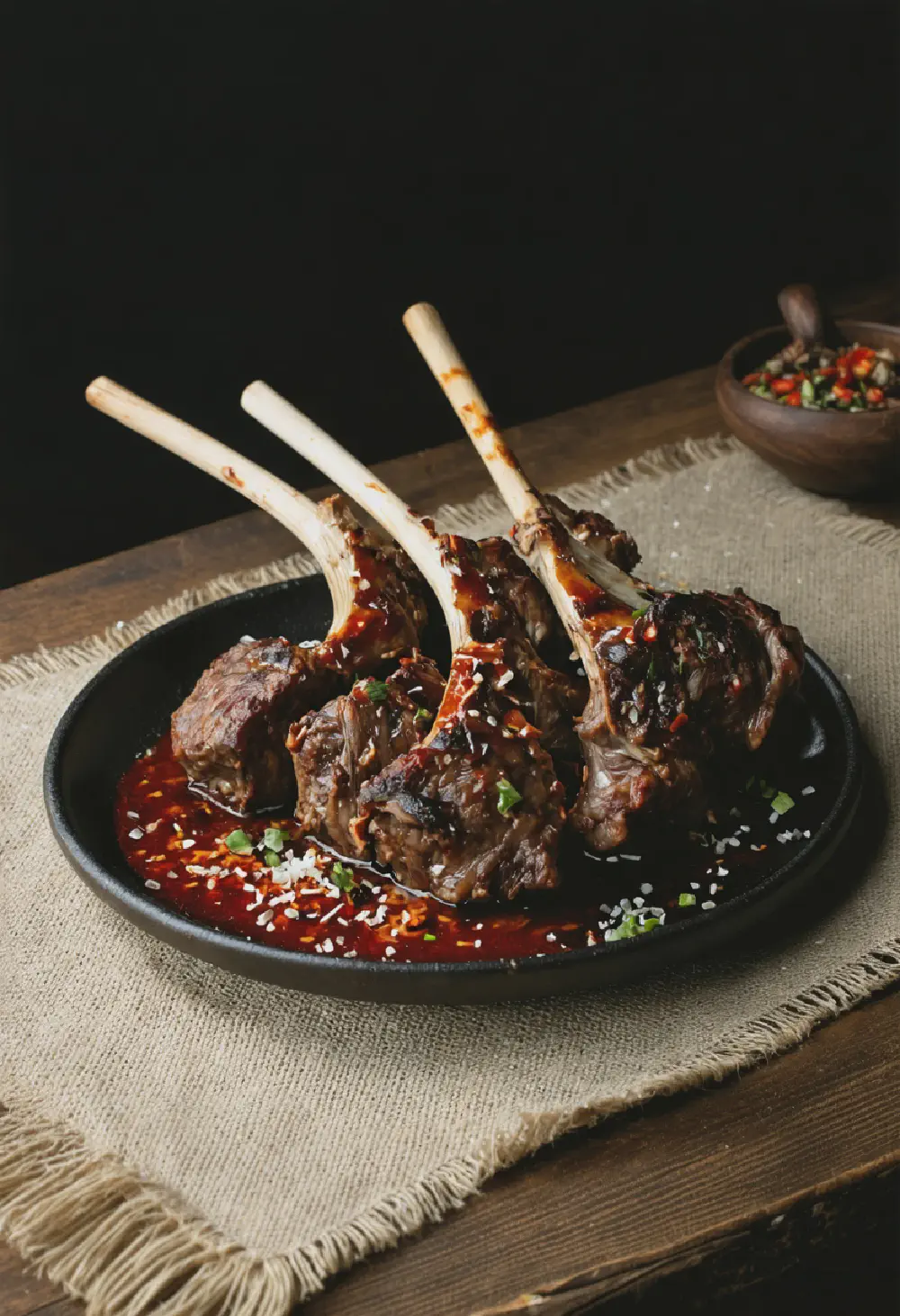Mongolian Beef
15M
30M
- Makes 4 servings
- 1 pound flank steak, thinly sliced against the grain
- 1/4 cup cornstarch
- 1/4 cup vegetable oil, for frying
- 1/2 cup soy sauce
- 1/2 cup water
- 3/4 cup dark brown sugar
- 1 tablespoon minced garlic
- 1 tablespoon minced ginger
- 1/2 cup sliced green onions
- 1 teaspoon sesame oil
- 1/4 teaspoon red pepper flakes (optional, for heat)
- In a large bowl, toss the sliced flank steak with cornstarch until evenly coated. Let it sit for 10 minutes to tenderize the meat.
- Heat the vegetable oil in a large skillet or wok over medium-high heat. Add the beef slices in batches, frying until crispy and golden brown, about 2-3 minutes per side. Remove the beef and set aside on a paper towel-lined plate.
- In the same skillet, add the soy sauce, water, and brown sugar. Stir until the sugar is dissolved. Add the minced garlic and ginger, cooking for about 1 minute until fragrant.
- Return the fried beef to the skillet and toss to coat in the sauce. Simmer for 2-3 minutes until the sauce thickens and the beef is well coated.
- Stir in the sliced green onions, sesame oil, and red pepper flakes if using. Cook for an additional minute.
- Serve the Mongolian Beef hot over steamed rice or noodles.
Mongolian Beef: A Chinese-American Delight
History
Mongolian Beef, despite its name, is not a traditional Mongolian dish but a popular Chinese-American creation. Its origins can be traced back to the 1970s in Taiwan, where it was first served in a restaurant called “P.F. Chang’s.” The dish quickly gained popularity in the United States, becoming a staple in many Chinese-American restaurants. The name “Mongolian Beef” is believed to have been inspired by the Mongolian barbecue style of cooking, which involves stir-frying thinly sliced meat with vegetables and sauces. Over the years, Mongolian Beef has evolved to become a beloved dish, appreciated for its unique flavor and tender texture.
Taste Profile
Mongolian Beef is renowned for its delectable taste profile, which strikes a perfect balance between savory and slightly sweet flavors. The tender slices of beef are coated in a rich, flavorful sauce made from a blend of soy sauce, brown sugar, and garlic. The sauce’s sweetness is complemented by the savory notes of the soy sauce, creating a harmonious flavor that tantalizes the taste buds. The dish is often garnished with green onions, adding a fresh, crisp element to the overall taste experience. The combination of tender beef, savory-sweet sauce, and fresh garnishes makes Mongolian Beef a truly irresistible dish.
Cultural Significance
Within the realm of Chinese-American cuisine, Mongolian Beef holds a special place. It represents the fusion of traditional Chinese flavors with American influences, showcasing the adaptability and creativity of Chinese-American chefs. The dish’s popularity in the United States has contributed to the growth and recognition of Chinese-American cuisine as a distinct culinary tradition. Mongolian Beef is often served at family gatherings, celebrations, and special occasions, symbolizing the joy of sharing a delicious meal with loved ones. Its presence on restaurant menus across the country highlights the enduring appeal of Chinese-American dishes and their ability to bring people together through the universal language of food.
